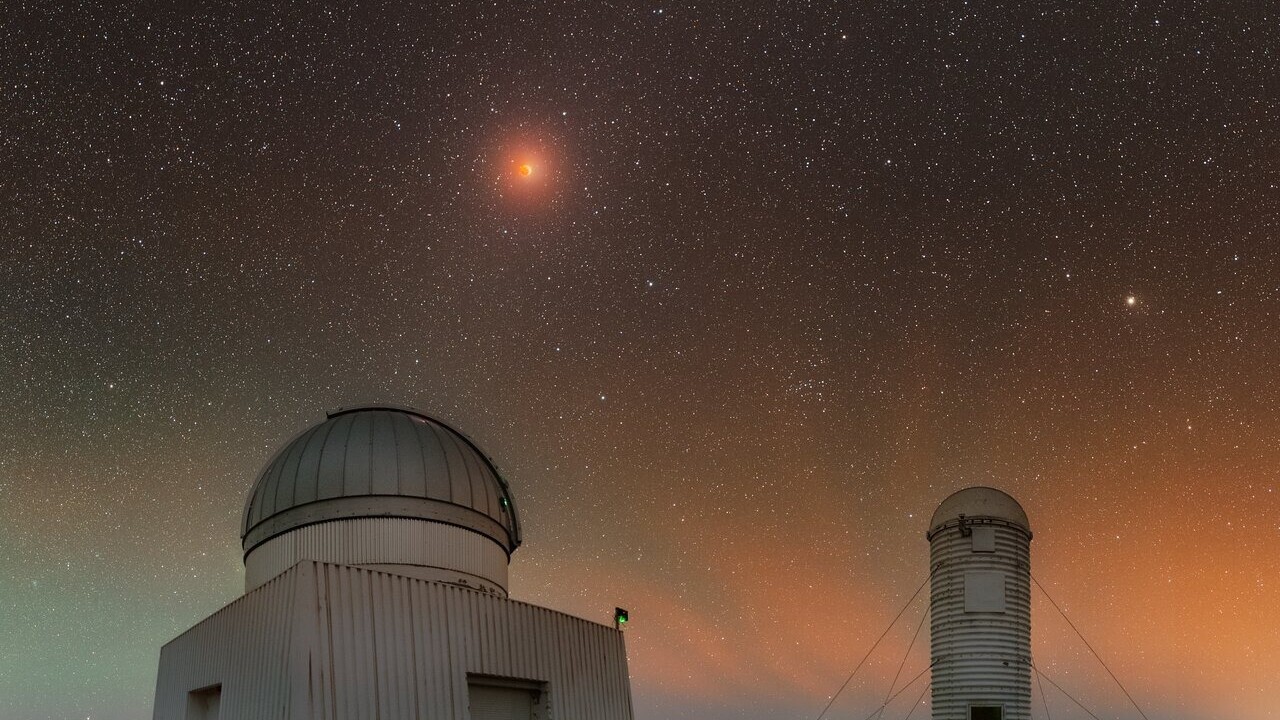In March, observers in Chile were treated to an especially spectacular sight, as the night sky lit up with orange and green hues. To top it off, the moon was in a full lunar eclipse.
What is it?
The two telescopes seen in this image are the U.S. Naval Observatory Deep South Telescope and the DIMM2 seeing monitor, both part of the Cerro Tololo Inter-American Observatory (CTIO), a program of the National Science Foundation's (NSF) NOIRLab.. Both help survey the night skies and provide a place for astronomers in the southern hemisphere to study the stunning and surprising structures in space.
Where is it?
Both telescopes are located 310 miles (500 km) north of Santiago, Chile, at an altitude of 7,200 feet (2,200 meters).

Why is it amazing?
Lunar eclipses are captivating to watch, as Earth passes directly between the sun and the moon, casting its shadow onto the surface of the moon. This only happens when the Earth, sun and moon are all perfectly aligned. According to NOIRLab, this alignment period was used by ancient astronomers as early as 600 BCE and called a "saros." The time between saros periods is around 18 years, 11 days, and 8 hours.
To get the full detail of a lunar eclipse, it helps to have binoculars or a telescope. Astrophotographers looking to upgrade their stargazing gear to capture lunar eclipses, should read our guide to the best cameras for capturing the night sky in 2025.
Want to learn more?
You can read more about lunar eclipses and the telescopes in Chile as researchers continue to study our night skies.

.jpg) 3 hours ago
1
3 hours ago
1
 English (US)
English (US)